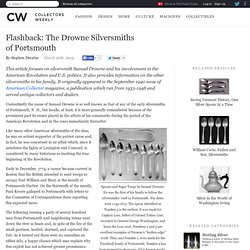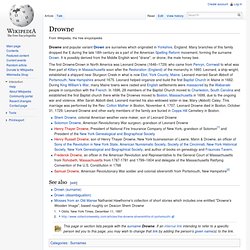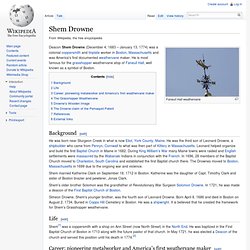

Paul Revere’s Work Found in Brown’s Rare Book Room. DROWN-L Leonard Drowne. The Drowne Silversmiths of Portsmouth. This article focuses on silversmith Samuel Drowne and his involvement in the American Revolution and U.S. politics.

It also provides information on the other silversmiths in his family. It originally appeared in the September 1940 issue of American Collector magazine, a publication which ran from 1933-1948 and served antique collectors and dealers. Undoubtedly the name of Samuel Drowne is as well known as that of any of the early silversmiths of Portsmouth, N. H., but locally, at least, it is more generally remembered because of the prominent part its owner played in the affairs of his community during the period of the American Revolution and in the years immediately thereafter. Drowne. Shem Drowne, colonial American weather vane maker, son of Leonard DrowneSolomon Drowne, American Revolutionary War surgeon, grandson of Leonard DrowneHenry Thayer Drowne, President of National Fire Insurance Company of New York, grandson of Solomon[1] and President of the New York Genealogical and Biographical SocietyHenry Russell Drowne, son of Henry Thayer Drowne, New York businessman of Lawrie, Mann & Drowne, an officer of Sons of the Revolution in New York State, American Numismatic Society, Society of the Cincinnati, New-York Historical Society, New York Genealogical and Biographical Society, and author of books on genealogy and Fraunces Tavern.Frederick Drowne, an officer in the American Revolution and Representative to the General Court of Massachusetts from Rohobeth, Massachusetts from 1787-1781 and 1799–1804 and delegate of the Massachusetts Ratifying Convention of the U.S.

Shem Drowne. Faneuil Hall weathervane Deacon Shem Drowne (December 4, 1683 – January 13, 1774) was a colonial coppersmith and tinplate worker in Boston, Massachusetts and was America's first documented weathervane maker.

He is most famous for the grasshopper weathervane atop of Faneuil Hall, well known as a symbol of Boston. Background[edit]